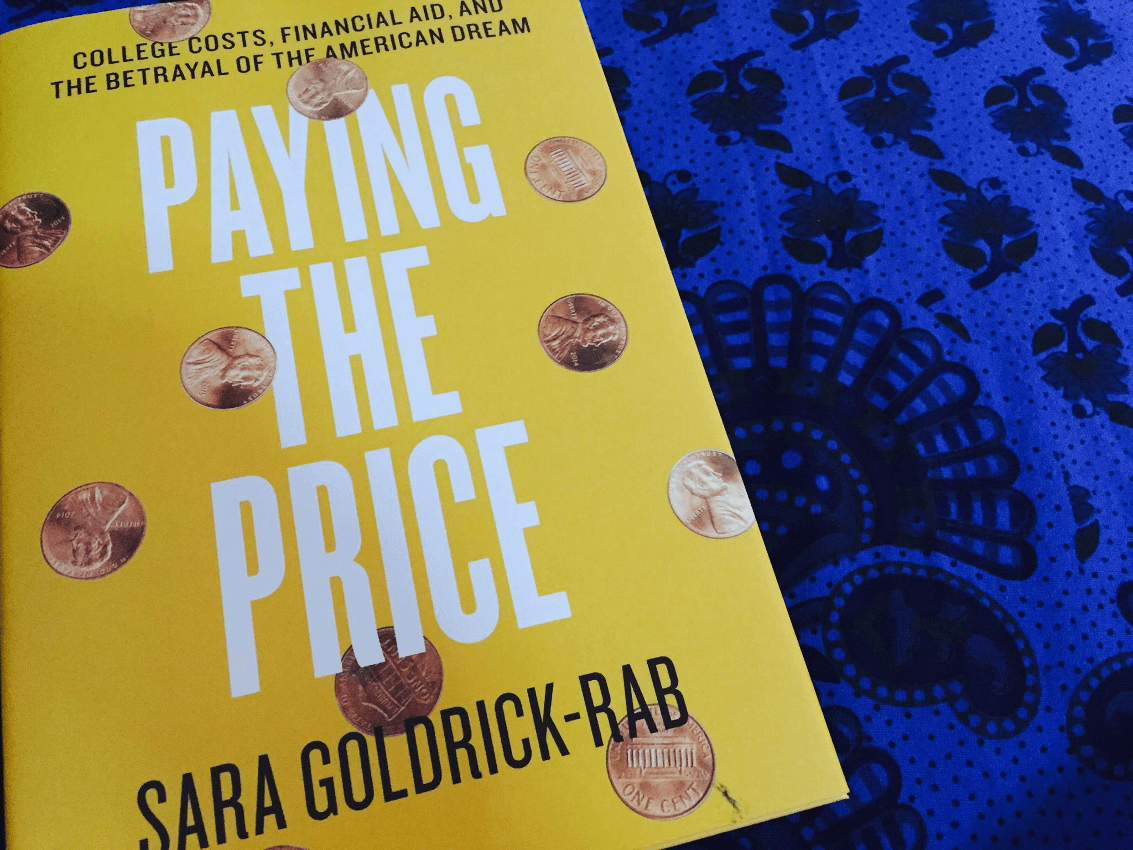Review
Review: Paying the Price: College Costs, Financial Aid, and the Betrayal of the American Dream — Sara Goldrick-Rab
Paying the Price draws on an unprecedented study that tracked the educational outcomes of 3,000 young adults that entered college in Wisconsin in 2008.

A review of Paying the Price: College Costs, Financial Aid, and the Betrayal of the American Dream, by Sara Goldrick-Rab. University of Chicago Press (September 13 2016) 368 pages.
Let’s say you’re a high-school student yearning to attend college. But nobody in your family has graduated high-school, and your household income is only about $25,000. You have three siblings, money’s always tight, and you often skip meals to make sure your younger siblings have enough to eat.
Your senior year of high-school you apply to college. You get in. Congratulations! But there’s one problem: How will you pay for college? And will the struggle to pay for college prevent you from completing it?
This is where the book “Paying the Price” by Temple University sociology professor, Sara Goldrick-Rab comes in. Goldrick-Rab has long been a scholar in the field of higher education policy, and is perhaps the most well-known name in the field of college affordability.
Paying the Price draws on an unprecedented study that tracked the educational outcomes of 3,000 young adults that entered college in Wisconsin in 2008. The average household income of the students she tracked? Just under $25,000.
Of those 3,000 students, more than half left college without a degree. And less than 20% finished within 5 years. The data may just reflect the 3,000 students she studied, but it reflects the heartbreaking reality that thousands of students across the nation face: enrolling in college doesn’t mean you’ll graduate.
Yet, while policymakers and pundits alike often attribute failure to complete college to personal failings (such as a lack of grit, intelligence, or time management), Goldrick-Rab’s thesis stands in contrast to commonly cited arguments.
Students from lower-income backgrounds aren’t finishing college because it’s simply far too expensive, she argues.
Paradoxically, the harder students work to afford college, such as by taking on multiple jobs to stay financially afloat, the lower their chances are of graduating. Sometimes, the struggle to afford college is what makes it a futile attempt. And it often leaves students saddled with student loans, but without a degree to show for it.
For example, while perennial stories of $100k+ debt burdens are excellent fodder for the media, Goldrick-Rab acknowledges that “six figure loan totals are rare.”
She introduces more nuanced theorizing on student loans: “An even more serious problem faces people who do not finish [their] degrees and yet have debt.”
“If [students] end up with debt and without a degree, they are at the greatest risk of defaulting on their loans or falling into delinquency.” This, she says, “is the real student debt crisis.”
Not only do many students face loan burdens without a degree to show for their investment, but nearly 20% of the 3,000 students she tracked experienced housing insecurity, and 56% of them were considered food-insecure.

“If you are a young person and you work hard enough, you can get a college degree, and set yourself on the path to a good life, right?” Not necessarily, she argues.
So, what to do about this quagmire?
It’s easy to point to Goldrick-Rab’s claim that the “future system” of financial aid should start by “making the first few years of college or the initial degree free to all” as a manifestation of left-wing bias.
Yet, Goldrick-Rab presents a uniquely balanced set of recommendations to make college completion for students more affordable —which is perhaps one of the best strengths of her book.
While she does call for “free college,” she also calls for increased transparency from college financial aid offices, for a simplified financial aid application, and to “make it possible for students to work their way through college.” The onus of improvement falls not just on the government, but on colleges as well.
There is one issue that I take with the book, albeit a small one. Were any of the 3,000 students that Goldrick-Rab tracked not academically prepared enough to attend college in the first place?
Goldrick-Rab mostly glosses over this, as she attributes failure to complete college to financial pressures. Yet, a part of me wonders if there’s more to it.
According to the National Assessment of Educational Progress, only a third of high-school seniors in the United States are actually prepared for college level coursework in math and reading.
For the students that Goldrick-Rab tracked, I suspect the amount of students who were academically prepared for college is much lower.
As Claire Lehmann has written, “it is unfair, even cruel, to encourage people to enter into higher education if they do not have the proficiency, or the capacity, to achieve decent grades.” Perhaps financial aid isn’t the only issue here.
Paying the Price is a landmark book that sheds light on the numerous contradictions, inconsistencies and problems with the current financial aid system. An attempt to encapsulate the problems of the American financial aid crisis in 260 pages is no small task. But in all, her book accurately conveys how the current financial aid system is a betrayal of the American Dream.






